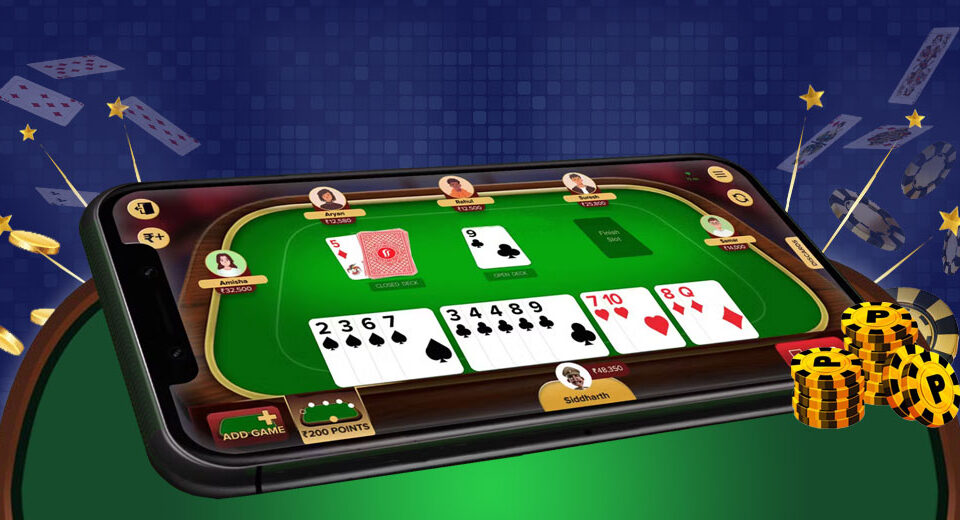How to Prioritise Pure Sequences Across IndianRummy Modes
In the world of IndianRummy, forming a pure sequence is the first and most essential rule. Without it, a declaration is invalid—no matter how good the rest of the hand looks. A pure sequence, made without jokers, forms the foundation of your game. But the level of priority it requires can vary significantly depending on the format being played—Points, Deals, or Pool. Learning how and when to create pure sequences based on game mode is key to reducing penalties and maximising hand flexibility. In this guide, we'll break down strategic ways to focus on pure sequences based on the variant and what it means for serious players in any online rummy game.
1. Why Pure Sequences Are Non-Negotiable in All Formats
The Indian rummy rules clearly state that at least one pure sequence is compulsory for a valid declaration. In fact, even if you’ve completed two other valid sequences using jokers, missing a pure one renders your hand void, resulting in a full penalty. That makes pure sequences not just important—but mandatory.
Your first objective, regardless of the variant, should be forming a pure sequence. However, how soon and how rigidly you chase it may differ depending on whether you're playing Points Rummy, Deals Rummy, or Pool Rummy.
2. In Points Rummy: Speed Over Style
Points Rummy is all about quick wins. The moment your hand is ready, you declare—and the game ends. In this format, forming a pure sequence early saves time and lowers risk. The faster you build one, the quicker you can switch to using jokers for the rest of the combinations.
When you're dealt your hand, scan immediately for cards that belong to the same suit and are numerically close. A natural three-card run (like 4♦–5♦–6♦) should be your priority. If you get one or two connectors in the first draw, discard unrelated high cards and aim to draw or hold cards that can extend the sequence.
Building a pure sequence early also gives you breathing room in Points Rummy, letting you make bold decisions later without the looming threat of a full penalty.
3. In Deals Rummy: Consistency Over Aggression
Deals Rummy is played over multiple rounds. Here, you can afford to be a little more patient in forming a pure sequence, but neglecting it too long can cost you.
If your starting hand doesn't immediately allow for a pure sequence, delay forming it only if you're confident in building strong sets first. However, avoid using jokers in early sequences, so that when you finally get your pure one, you’re not forced to dismantle other groups to form it.
Also, always try to keep potential pure runs open—like keeping 6♥–7♥ while waiting for either 5♥ or 8♥. Such strategy keeps your options alive and helps you react faster as the draw pile progresses.
In Indian rummy online tournament play, pure sequences often decide close contests. So even if your hand isn’t immediately threatening, a timely pure run can give you the psychological edge in a match spread over several deals.
4. In Pool Rummy: Playing the Long Game
Pool Rummy is all about survival. If you cross a point threshold (usually 101 or 201), you're out. In this mode, reducing risk is crucial, and that begins with an early pure sequence.
In Pool Rummy, treat a pure sequence as your hand’s insurance policy. Even if you have other playable sets, they’re all worthless without the pure sequence. It's the only way to avoid absorbing a massive penalty if someone else declares.
Because this mode includes high-value cards across long games, always target low and mid-value cards for your pure sequence. That way, even if you’re forced to drop or end with an invalid declaration, your penalty is minimised.
5. Sequence Patterns to Recognise Early
Understanding common patterns will help you act faster and smarter. Cards that are one apart in the same suit (like 7♠–9♠) should be held, as one more card could complete a natural run.
Avoid using jokers or high cards in a rush to complete sequences unless the opportunity is clear. In all Indian rummy card game formats, control over your hand means recognising which combinations can become pure without overcommitting.
Pro tip: Always monitor suits where you hold at least two consecutive cards without a joker. That’s your signal to chase a natural run.
6. Mistakes to Avoid While Chasing Pure Sequences
Discarding potential sequence cards too early: Many players toss a 6♣ because they see no immediate 5♣ or 7♣. But given another draw or two, the sequence could have been completed naturally.
Forcing a sequence with jokers: This is a critical mistake. Even in dire situations, jokers cannot complete a pure sequence. Trying to build one with a joker wastes both time and resources.
Ignoring a potential pure run in favour of sets: Remember, sets do not matter unless you’ve first created a pure sequence. It’s easy to focus on three-of-a-kind and delay what matters most.
7. Transitioning Between Formats
If you frequently switch between online rummy game formats, train your reflex to assess hand type immediately. In Points Rummy, focus sharply on early sequence completion. In Pool Rummy, adjust slightly towards risk control and long-term survival. In Deals Rummy, pace yourself but never neglect the fundamentals.
Be aware that while jokers are valuable in most combinations, they cannot substitute the clarity and safety of a genuine pure sequence. Whether you're in a casual hand or a tournament table, this principle remains unchanged.
Conclusion – A pure sequence formed early is the shield that protects every other move.
Mastering the art of prioritising pure sequences is not just a technical skill—it is a mindset that shapes every move in IndianRummy. From the urgent pace of Points Rummy to the calculated patience in Deals and the long-term survival strategy of Pool Rummy, your ability to focus on pure sequences influences your chances of staying in the game and reducing penalties. It builds a foundation upon which every other move stands. The sooner you make the formation of pure sequences a reflex rather than a reaction, the more consistent and confident your gameplay becomes—across all formats and opponents.




